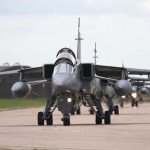The terms ‘Indigenisation’ and ‘Self-reliance’ in the context of Indian defence equipment have been talked and written about so much over the last five decades that they no longer arouse any passion either among the armed services personnel or related industrialists. Many entrepreneurs as well as seasoned industrialists have lost significant amounts of time and money hoping to solve some of the problems of the Armed Services. This situation is a direct result of the absence of a holistic, focused approach to ‘Self-reliance’ by the defence services and the defence ministry. The problems posed by obsolete imported equipment that are still in service, has only aggravated the issue.
In addition to the above, the Indian armed services possess a wide variety of platforms with legacy systems of western as well as Russian origin, with very little technical documentation provided by the OEMs. The result is that the user agencies do not even know how they operate or repair them. Since these are specialised, there are very few private sector companies systems outside the defence domain with capability to handle such repairs, let alone indigenise the system. Even those who are willing, are forced to go through a very tedious tendering process where one is expected to bid for something for which even the user agency (Army/Navy/Air Force) does not have the technical specifications! DPSUs have failed to facilitate the growth of the defence manufacturing ecosystem over the last five decades. It is therefore no surprise that indigenisation efforts have yielded very little.
Where does one start? Components, assemblies, sub-systems or complete systems?
Over the last 20 years, most defence and aerospace equipment have been dominated by electronics and hydraulics content. Even in hydraulic systems, control functions are performed through electronics. It would therefore be fair to say that a large part of indigenisation challenges lie in electronic systems.
The question of whether indigenisation efforts should start at board level or system level can only be addressed on a case to case basis. However, such decisions involve a thorough knowledge of the domain of the product/system. In the case of electronics equipment, a specialist electronics designer well versed in digital and analogue circuits used in defence and aerospace systems should necessary be involved. Due to the lack of such specialists within the Armed Services themselves, it would be ideal to constitute a team comprising specialists from private industry having a proven track record in design and development activity as well as specialists from DPSUs who possess the system level knowledge and expertise.
Radel has successfully indigenised three airborne LRUs using a black box concept to realise a Form, Fit and Function replacement for obsolete OEM imported equipment. Four more airborne LRUs are under development and these would be completed within the current year. These were possible only due to the strong A&D domain expertise along with design capabilities available within the organisation. Radel had successfully demonstrated the feasibility of repair of an electronic starter module of the Jaguar fighter aircraft in 2012, has recently repaired a High Voltage (18kV) power supply module of a Seaking helicopter for the Indian Navy, through a judicious mix of reverse engineering, redesign and repair techniques and also designed and developed a sophisticated ATE for a naval armament control system, which was executed completely by reverse engineering the electronic modules forming part of the armament system itself.
There exist many such opportunities where an indigenous and cost effective design/repair/modification can be quickly implemented, provided a competent and proven vendor is given a fair opportunity.
The complete paper can be viewed on slide-share.
